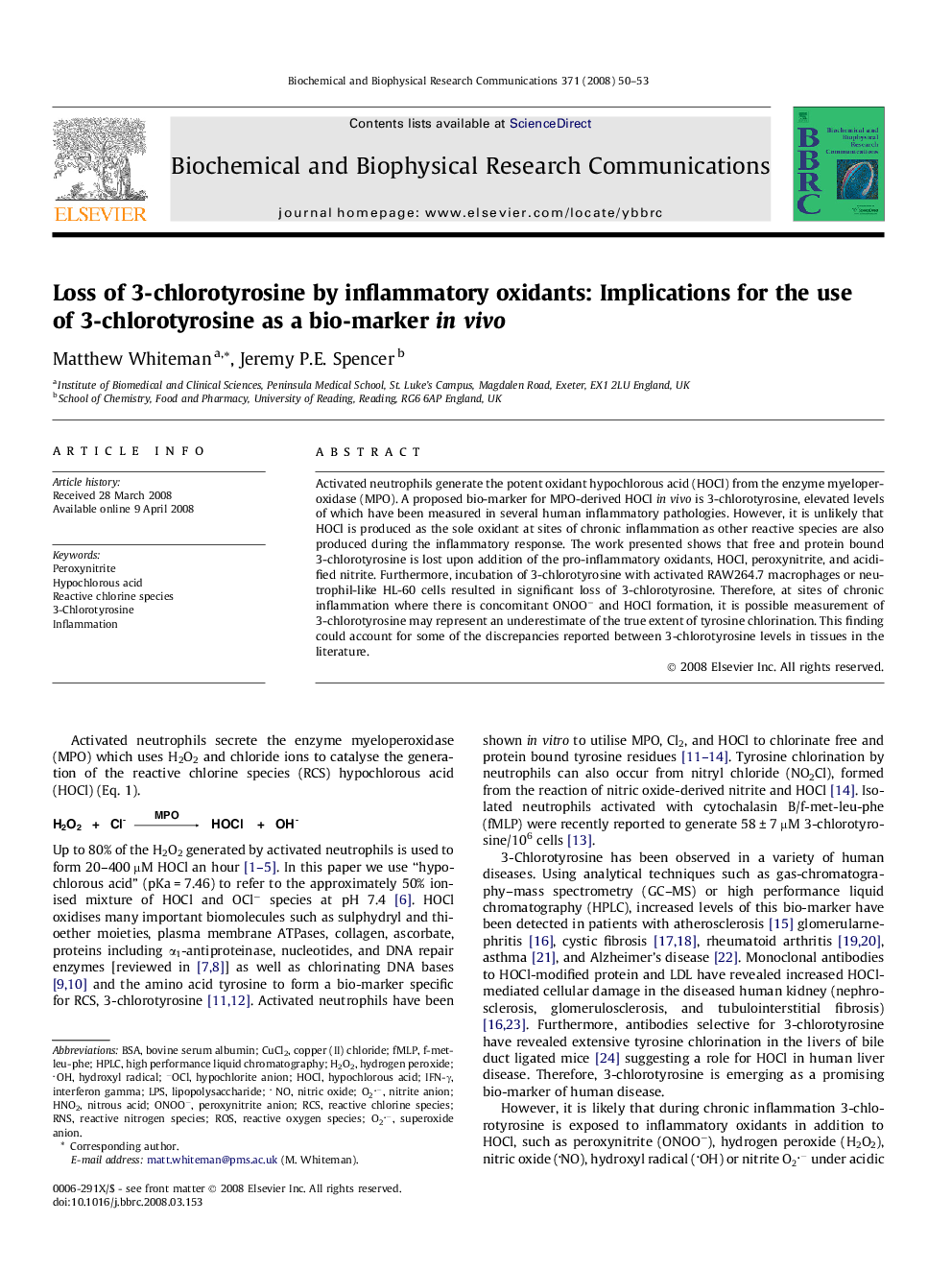| Article ID | Journal | Published Year | Pages | File Type |
|---|---|---|---|---|
| 1935636 | Biochemical and Biophysical Research Communications | 2008 | 4 Pages |
Activated neutrophils generate the potent oxidant hypochlorous acid (HOCl) from the enzyme myeloperoxidase (MPO). A proposed bio-marker for MPO-derived HOCl in vivo is 3-chlorotyrosine, elevated levels of which have been measured in several human inflammatory pathologies. However, it is unlikely that HOCl is produced as the sole oxidant at sites of chronic inflammation as other reactive species are also produced during the inflammatory response. The work presented shows that free and protein bound 3-chlorotyrosine is lost upon addition of the pro-inflammatory oxidants, HOCl, peroxynitrite, and acidified nitrite. Furthermore, incubation of 3-chlorotyrosine with activated RAW264.7 macrophages or neutrophil-like HL-60 cells resulted in significant loss of 3-chlorotyrosine. Therefore, at sites of chronic inflammation where there is concomitant ONOO− and HOCl formation, it is possible measurement of 3-chlorotyrosine may represent an underestimate of the true extent of tyrosine chlorination. This finding could account for some of the discrepancies reported between 3-chlorotyrosine levels in tissues in the literature.
